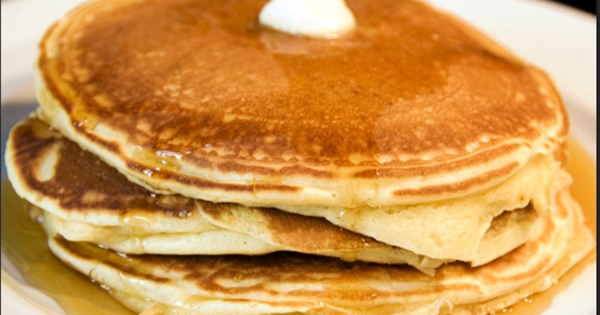In an era characterized by a plethora of choices, the query “Which is better?” has emerged as a perennial consideration across various domains. From the consumer marketplace to philosophical debates, this inquiry speaks to a fundamental aspect of human cognition and societal interaction—our ceaseless urge to curate, classify, and prefer. This essay seeks to dissect the underlying reasons for this fascination with comparisons while simultaneously exploring the nuances embedded within the simple articulation of preference.
At its core, the determination of superiority oscillates between subjective and objective realms. Subjectivity arises from the personal values, experiences, and emotions that each individual brings to the table. For instance, in the artistic domain, one may prefer a particular style of painting over another, influenced by personal taste, emotional resonance, and even cultural background. Conversely, objectivity appears in scenarios where quantifiable metrics can discern efficacy or quality, such as in the assessment of technological devices, health interventions, or academic achievements. The intersection of these two perspectives complicates the discourse on what constitutes “better.”
Indeed, the inquiry into preference often reveals underlying cultural paradigms that dictate our choices. In Western cultures, for example, individualism drives a preference hierarchy based on unique personal experiences. In contrast, collectivist cultures may prioritize consensus and communal values, promoting choices that reinforce societal cohesion. This cultural backdrop invites an intriguing consideration: is “better” an intrinsic quality, or is it reflective of the socio-cultural lens we employ to evaluate options? The vastness of human experience renders it plausible that what is deemed “better” may vary significantly, based merely on the cultural constructs validating or invalidating those choices.
Furthermore, the cognitive mechanisms underpinning the evaluation of alternatives introduce additional complexity. The process involves a multitude of heuristics—mental shortcuts that simplify decision-making. For instance, the availability heuristic leads individuals to base judgments on readily recalled examples, while the confirmation bias may skew preferences toward options that align with pre-existing beliefs. Such cognitive tendencies elucidate why popular opinion can oscillate wildly, with trends and fads dominating public discourse in relation to what is considered “better” at any given moment. Inadvertently, this creates an environment where personal preferences can often be swayed by the prevailing zeitgeist rather than by intrinsic value.
Moreover, the emotional weight associated with making a “better” choice cannot be understated. Psychological research indicates that decision-making is profoundly influenced by affect—our emotions, whether conscious or subconscious, inform our evaluations and preferences. The concept of loss aversion, as posited by behavioral economists, illustrates how individuals overwhelmingly prefer avoiding losses to acquiring equivalent gains. This notion engenders a peculiar proclivity for safety and familiarity, often manifesting in disinclination toward choices perceived as risky or unconventional. Consequently, the pursuit of what is “better” surfaces as a balancing act between inherent desires and aversions, complicating our understanding of preference.
The influence of social dynamics presents another layer of depth to the discourse. In various contexts, such as social media platforms and peer reviews, the notion of comparative analysis heightens. The existence of platform-oriented feedback mechanisms—ratings, likes, and shares—lends credence to certain choices, effectively establishing a hierarchical matrix of better versus worse. Importantly, this can lead to a phenomenon known as the bandwagon effect, where individuals are more likely to adopt popular opinions or attributes regardless of their personal inclinations. Herein lies a paradox: in the quest for improvement and superiority, individuals might sacrifice authenticity for societal validation.
To explore further, one must consider the philosophical implications of the question “Which is better?” The concept of virtue ethics, articulated by philosophers like Aristotle, posits the idea of a teleological approach to evaluating choices. Under this lens, the notion of “better” transcends mere preference and enters a realm of moral and ethical evaluation. Decisions are assessed not only based on their outcomes but on their alignment with virtuous living and character development. This philosophical perspective embodies the essential quest for meaning that underlies our relentless pursuit of betterment.
In the scientific sphere, the articulation of preference towards certain theories, models, or methodologies also reflects a quest for a clearer understanding of the complexities of the universe. Within scientific discourse, scholars may engage in vigorous debates over which theory elucidates phenomena more convincingly. These discussions encapsulate the nature of scientific inquiry, where discerning better models leads to advancement and innovation. The evolving landscape of theory and synthesis in science highlights that “better” is an iterative concept, continuously refined through discourse, empirical evidence, and reevaluation.
In summation, the inquiry surrounding “Which is better?” encapsulates a myriad of layers, from subjective preferences and cognitive biases to emotional influences and cultural contexts. It poses philosophical dividends while aligning with broader societal narratives, thus inviting an exploration far beyond mere surface-level comparisons. To seek “better” is to engage with a dynamic interplay of human experience that prompts introspection as much as it ignites discourse. As individuals navigate this intricate landscape of choices, the endeavor to discern what is better might, in fact, be as significant as the conclusions drawn therein.












